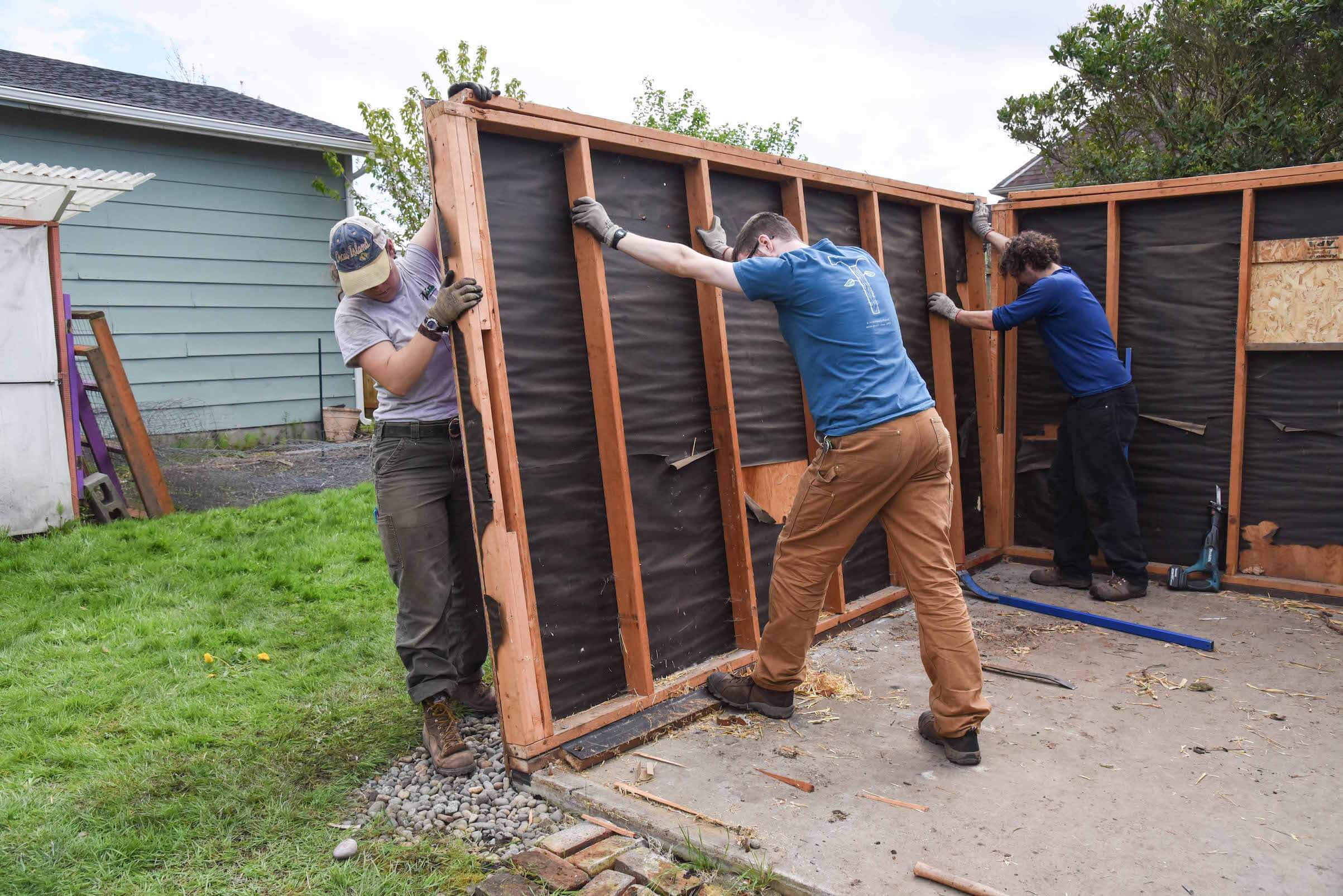
When you think of demolition, you probably imagine a wrecking ball knocking down a structure in a few hours. Aside from protecting the bulldozer and operator, there’s often no plan and no rhyme or reason to a demolition. Deconstruction, on the other hand, takes planning.
As a licensed and bonded demolition contractor, our salvage crew has decades of combined experience coming up with and executing these plans for all kinds of deconstruction projects, big and small. That means from the roof to the foundation, we can help maximize reusable and recyclable materials yields and divert all kinds of building materials out of the waste stream.
Structural vs. non-structural deconstruction
One of the first questions we try to answer when we’re approached about a deconstruction project is whether the work will be non-structural or structural. What we call salvage work is often called non-structural deconstruction, which allows for materials to be removed from a building without compromising the load-bearing or exterior walls and the roof. Non-structural items include things like doors, cabinet sets, flooring, trim, windows and other finishing materials.
In contrast, structural deconstruction requires more integral components of a building, like load-bearing walls, to be systematically dismantled. Usually we take apart a building in the reverse order that it was built in, starting at the roof and working our way down. Because of the infinite variety in building methods and styles, this structural work requires a greater general knowledge of the industry to plan accordingly. Anticipating and preparing for each step of the process ensures the safety of our crew and prolongs the buildings structural integrity during deconstruction.
Prior to the 1990’s, structural deconstruction was performed very rarely, and only as a means to reclaim extremely rare or expensive materials, like oversized old growth beams or leaded glass bay windows. However, interest in the field has been revitalized in recent years, primarily due to the massive volume of lumber that deconstruction projects can yield.
Decon diaries: the series
Deconstruction is more than structural vs. non-structural.This is the part of a multi-post series that will dive into the interesting world of deconstruction. We invite you to follow along. As we add more to this series, click here to see the whole series to learn about successes, tools used, the permitting process and more.
